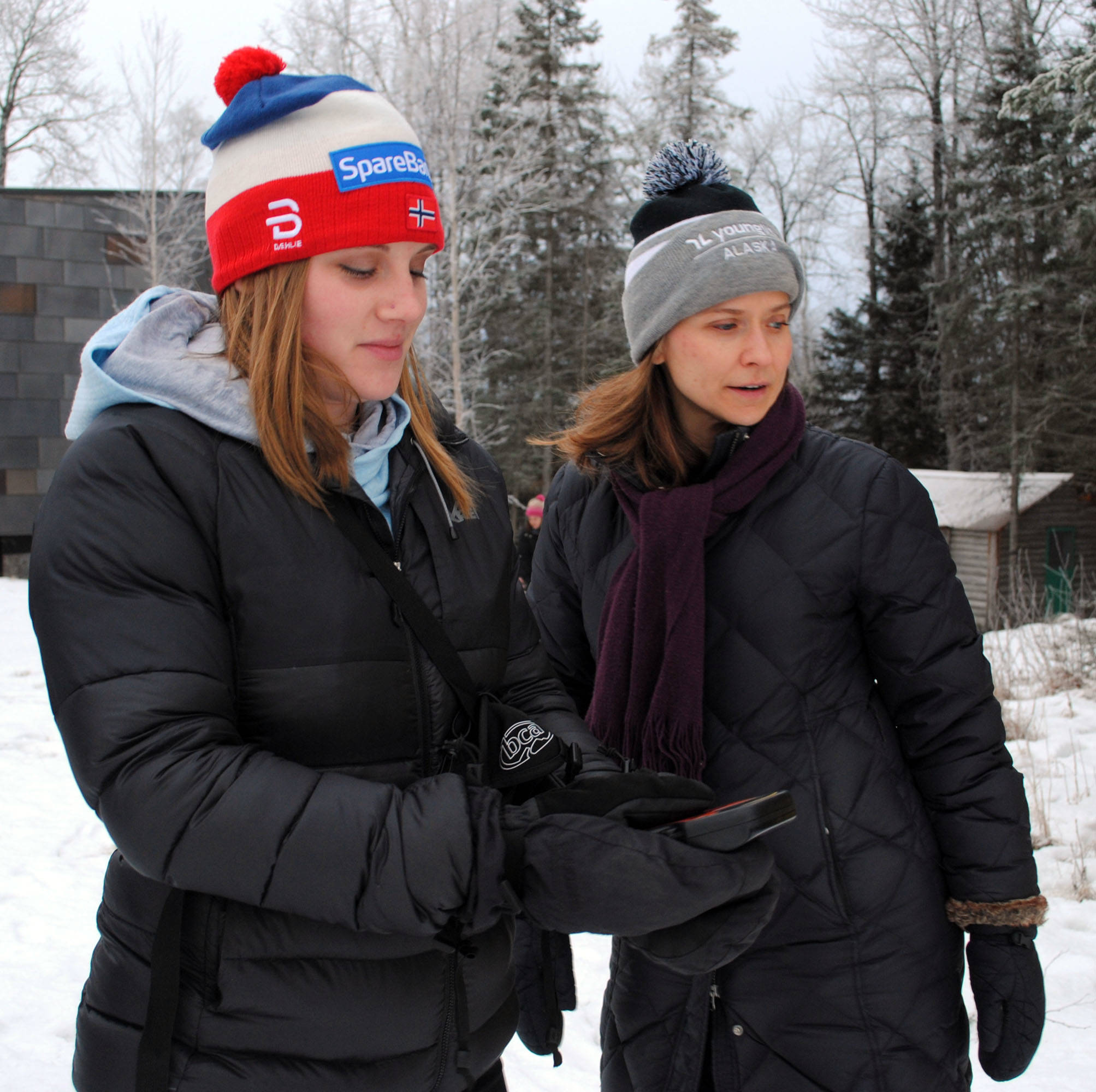Despite unusually warm weather, Avalanche Observer Alex Mclain wants the community to be prepared.
Mclain, who works with the Chugach National Forest Avalanche Information Center, led an avalanche safety course at the Kenai Wildlife Refuge Visitor’s Center this Saturday, demonstrating tips and techniques for anyone planning to adventure across the snow-covered mountains of Alaska.
“Whenever we go into avalanche training, it’s important to remember that there are still avalanches even if the weather isn’t there,” Mclain said. “I would recommend people be prepared as always.”
Alaska has been seeing some unusually warm weather, with temperatures in Anchorage reaching 44 degrees on Tuesday in comparison to the 37 degree average, according to the National Weather Service. The warmer weather has been thwarting winter plans for many.
“I’ve been getting into back country skiing and it’s important to be avalanche aware when you’re back there,” said April Kaufman, an attendee at Saturday’s class. “I haven’t been able to ski as much as I usually do (because of the weather) and I got a pair of snow shoes for Christmas, but I have to brainstorm places to use those.”
After the classroom portion of the session, Mclain brought the students outside to find avalanche beacons he had hidden around the perimeter of the visitor’s center. An avalanche beacon, or tranceiver, is a device that emits a pulsed radio signal that can be picked up by other beacons even through piled snow. Using either Mclain’s beacons or their own, students followed the signs of the avalanche (Mclain’s footprints in this case) and the beeps of their beacons to find the hidden probes underneath a small smattering of snow.
Mclain also recommends that adventurers bring a snow shovel, perfect for testing snow conditions or digging a victim out from the snow, and a probe, which is a collapsible aluminum pole that can be use to find a victim or pinpoint a beaocn.
“From years past, I’ve had experience with a ton of snow,” said Kailey Mucha, who was attending the avalanche safety course because of a new found interest in snowmaching and her past experiences skiing. “When there’s not a lot of snow, to the point where I don’t get to use my nice skis and it’s just not as fun. It’s not very pretty outside and I have to watch for rocks when skiing. I just really wish there was snow. I’m just hoping for it.”
In a worst case scenario, snow wise, Mucha will be prepared, after having received the proper safety equipment for Christmas, including an avalanche beacon.
“I’m getting into snow machining and, when I was talking to my friends about the winter, I realized I needed to be more prepared,” Mucha said. “I have a sled and being aware of the dangers and everything that can come up when you’re snowmaching is important… Today, I definitely learned that it’s important to have fun, but to still be safe and be thinking about safety before you go out.”
According to the Avalanche Information Center, the avalanche danger in Turnagain Pass is considerable above 2000 feet.
“Cautious route-finding and conservative decision-making are essential. Sticking to low consequence terrain less than 30 degrees is recommended,” the center said in a statement. “…The Chugach National Forest wants to remind riders to avoid areas with thin snow cover like “Rookie Hill” and the Southern end of Turnagain Pass towards Bertha Creek. Johnson Pass remains closed due to lack of snow.”
For more information on avalanche safety, visit www.cnfaic.org.
Reach Kat Sorensen at kat.sorensen@peninsulaclarion.com

